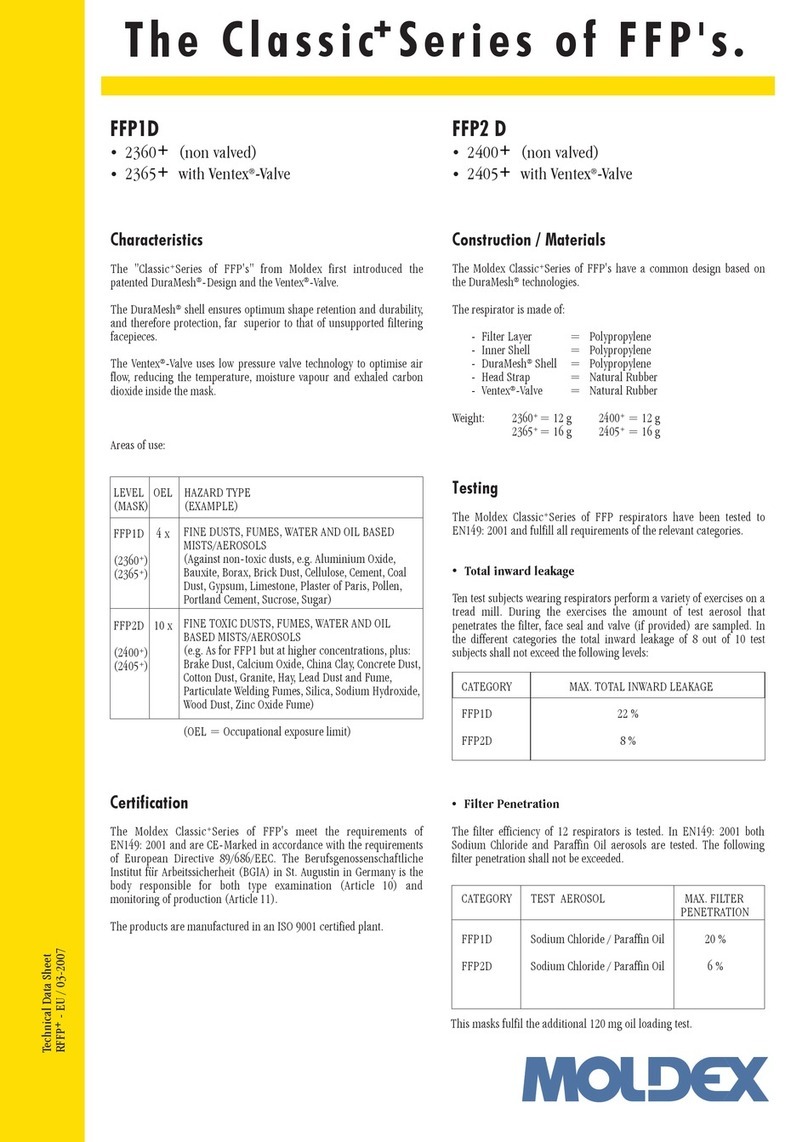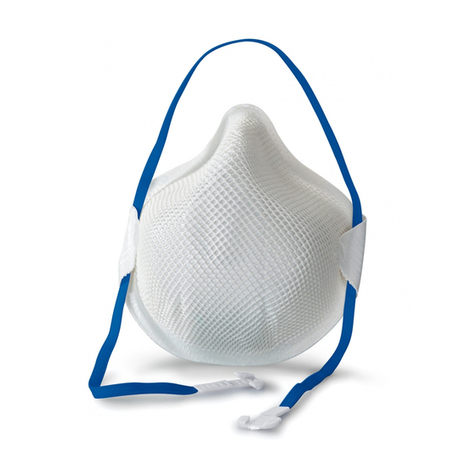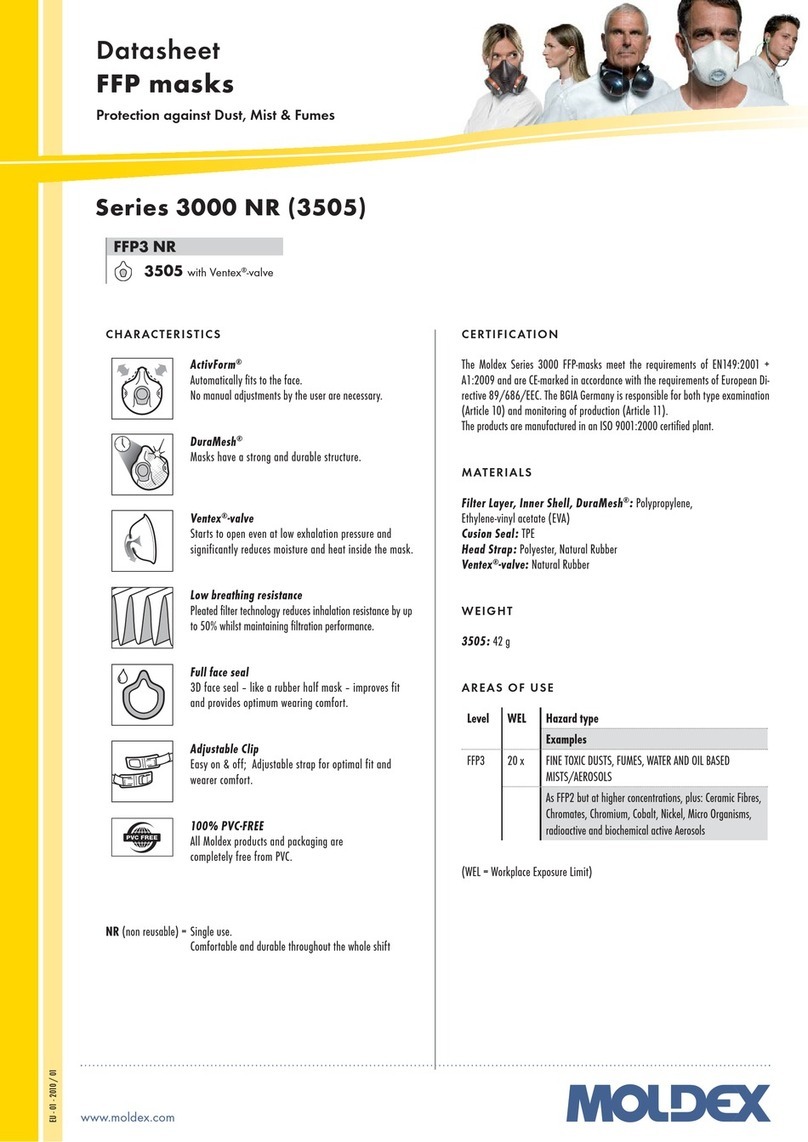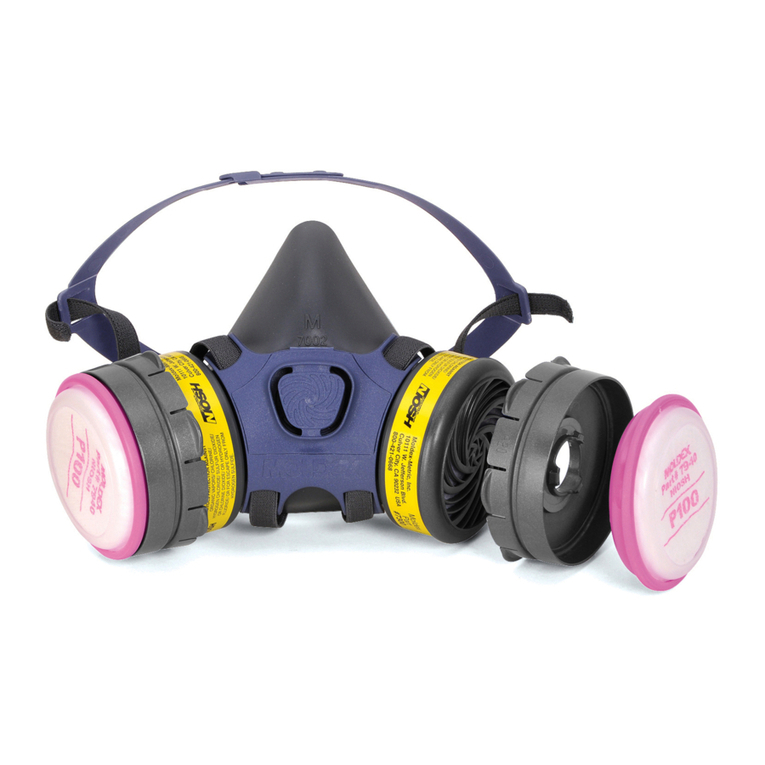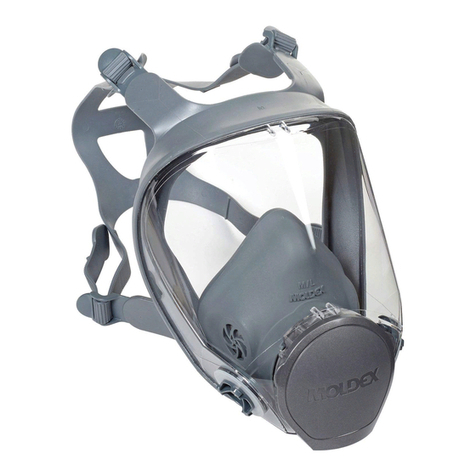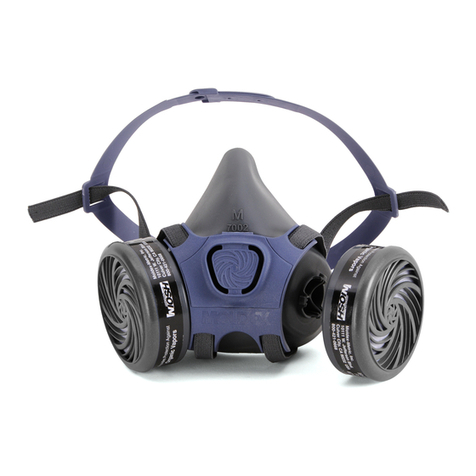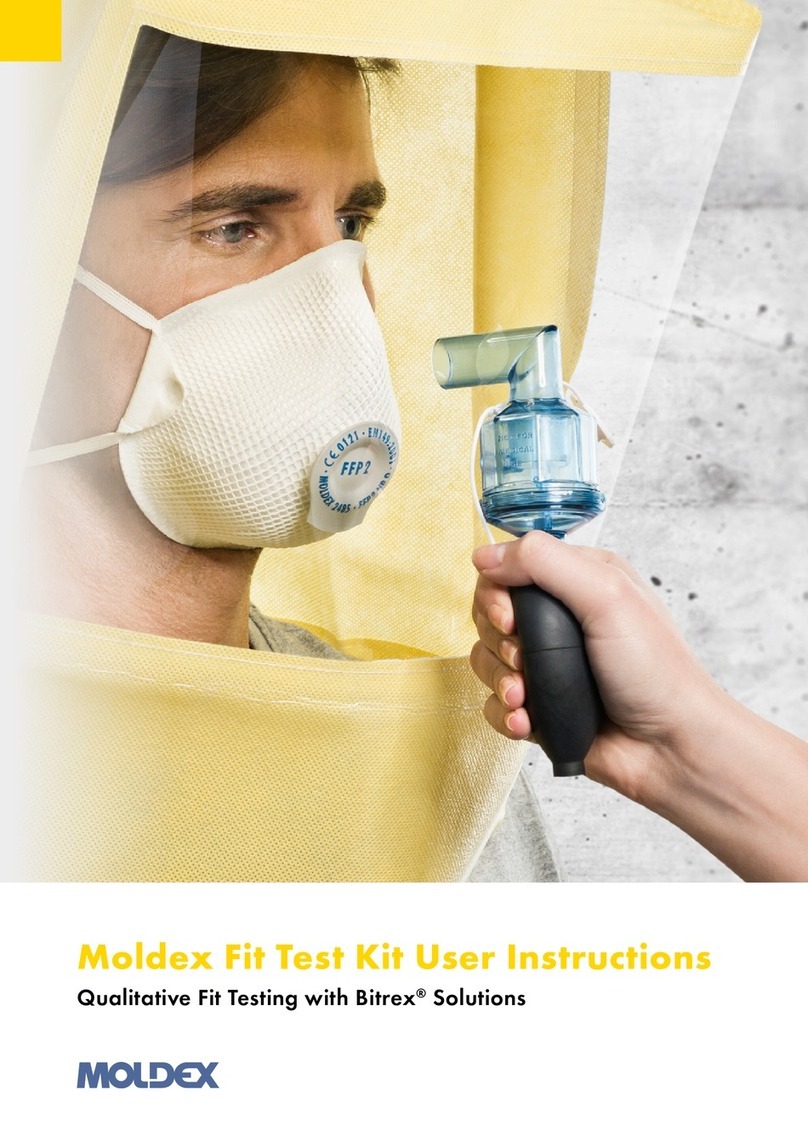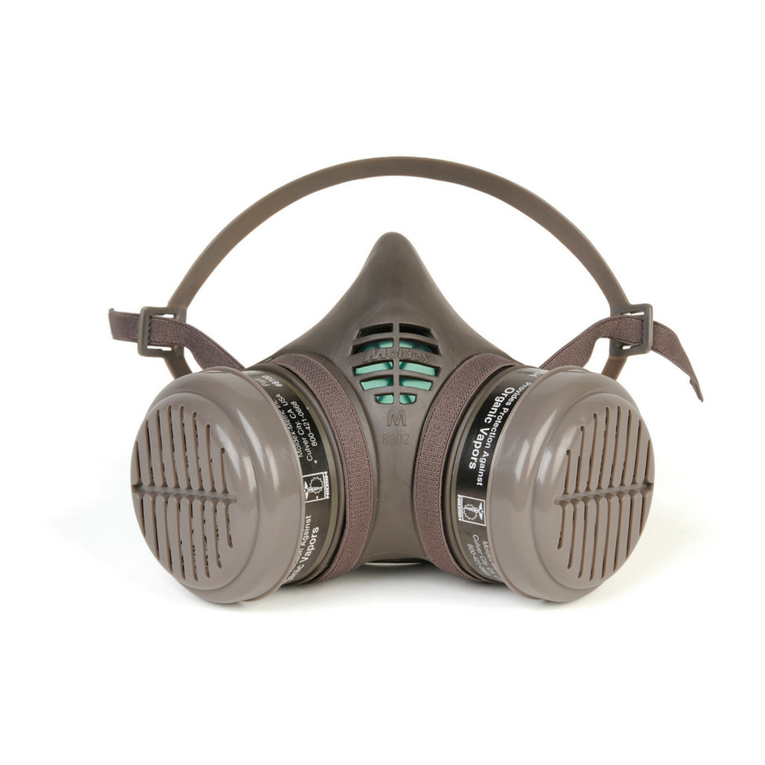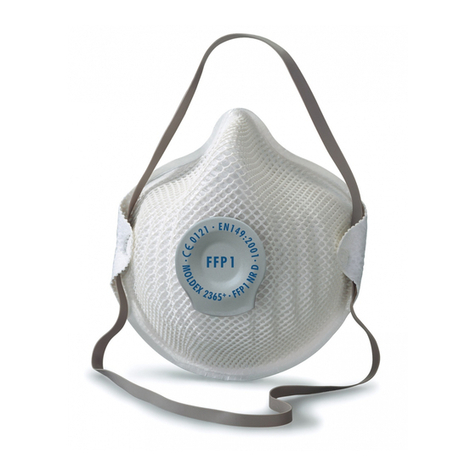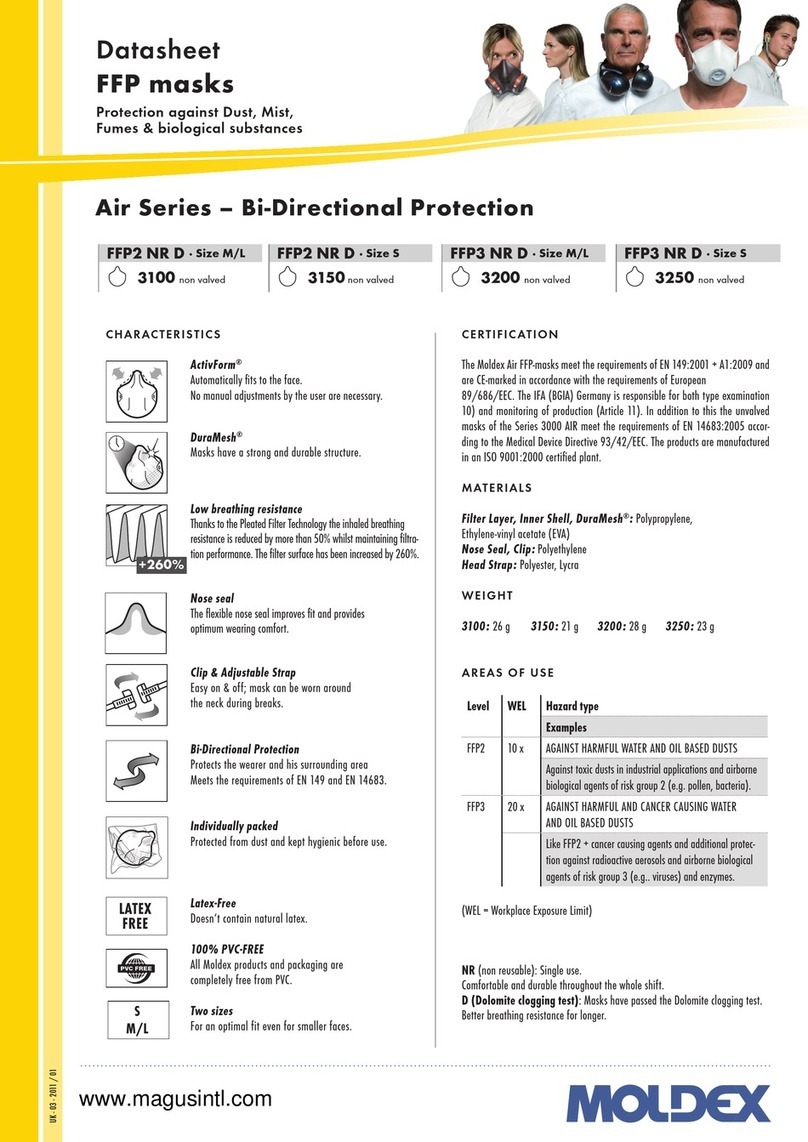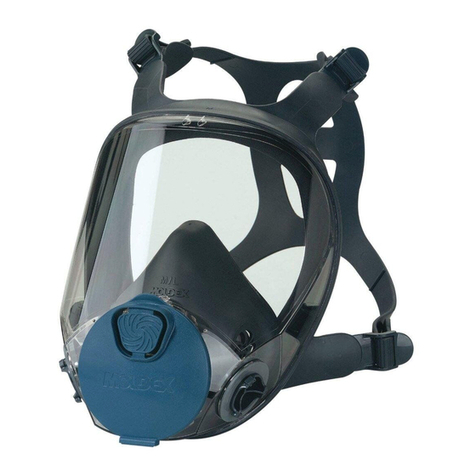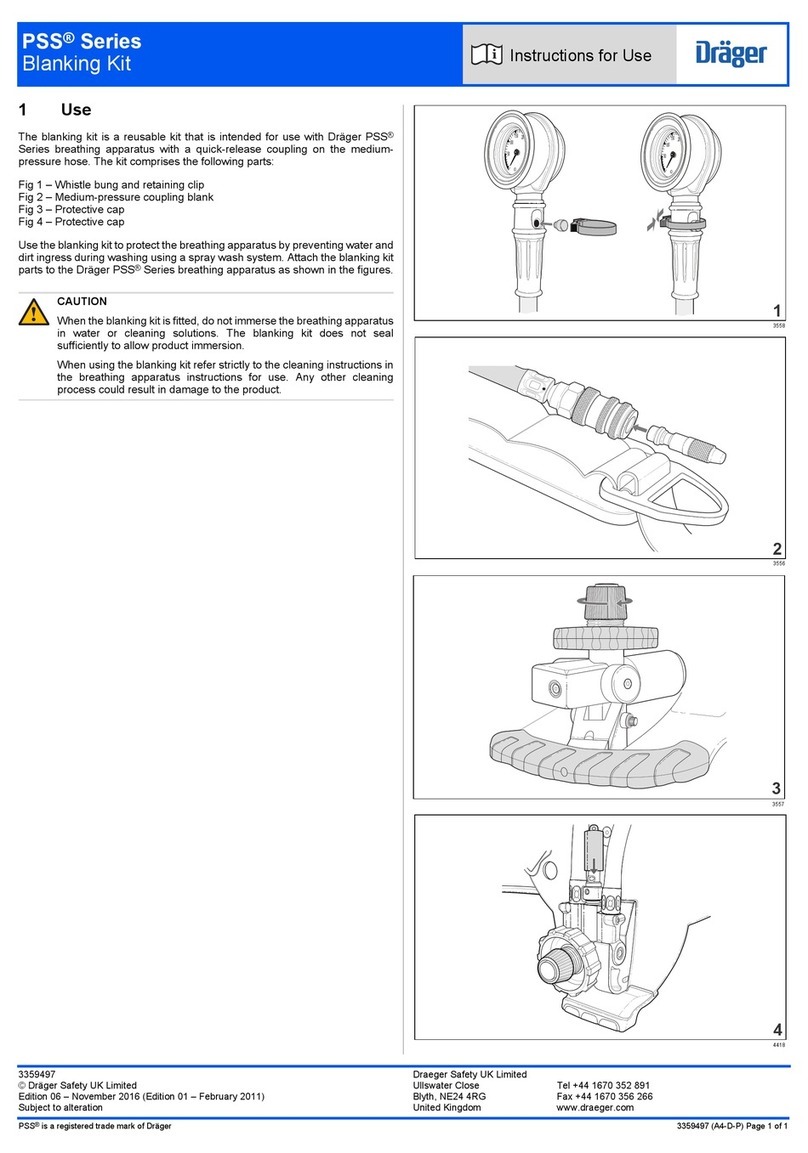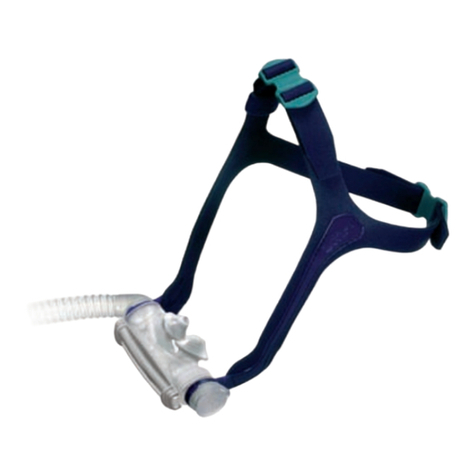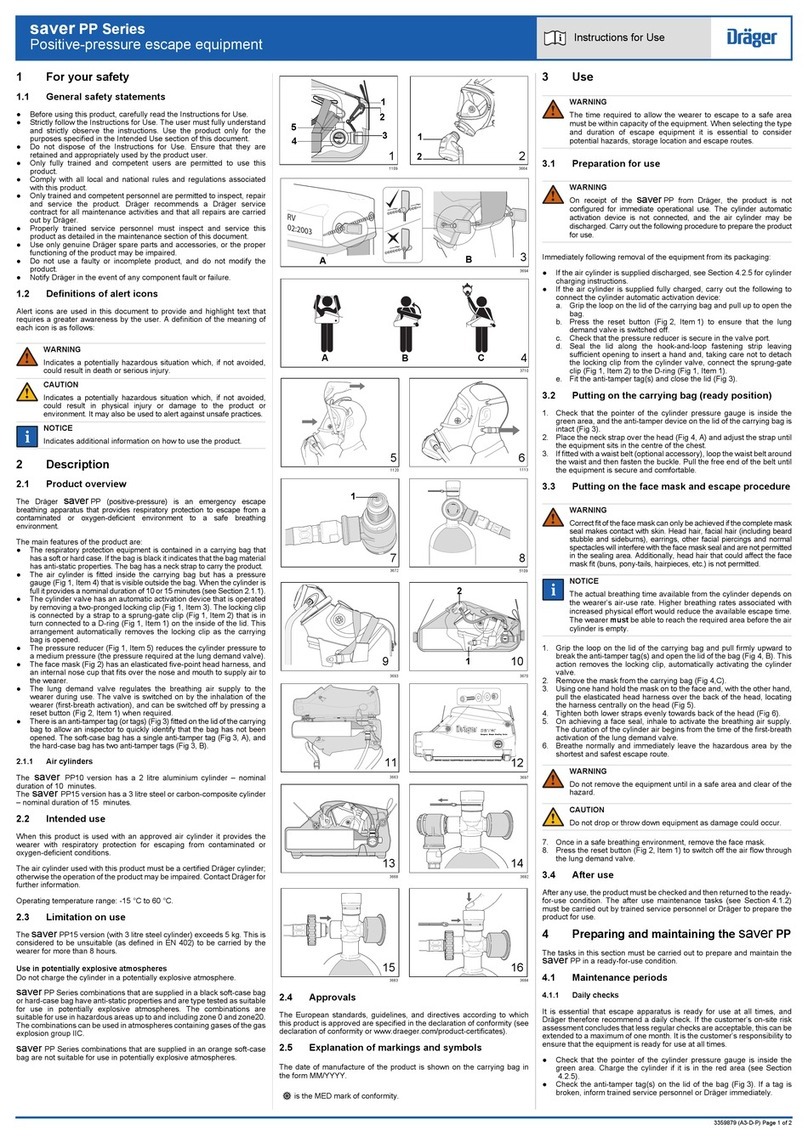
12
CHANGEOUT SCHEDULES
OSHA 1910.134(d) requires that the employer implement a
change schedule for cartridges based on objective informa-
tion or data that will ensure cartridges are changed before the
end of their service life (see OSHA1910.134 for complete
text). A cartridge’s useful service life is how long it provides
adequate protection from harmful chemicals in the air. The
service life of a cartridge depends on many factors, including
environmental conditions, breathing rate, cartridge filtering
capacity and the amount of contaminants in the air.
If you know what the chemical is and how much of it you are
exposed to, then you are ready to estimate how long your
respirator cartridges will work and apply the safety factor.
You must use some type of objective data to develop a
changeout schedule. Options for determining a cartridge’s
service life include:
1. Conducting experimental tests.
2. Using a mathematical model like the “Advisor Genius” or
“Breakthrough Software.”
3. Using the manufacturer’s recommendation. (Refer to the
Estimated Cartridge Breakthrough Time in the Moldex
Chemical Selection Guide. This data is only provided as a
guide.)
For more detailed information on these methods, refer to
OSHA’s website at:
w
ww
ww
w.
.o
os
sh
ha
a.
.g
go
ov
v/
/S
SL
LT
TC
C/
/e
et
to
oo
ol
ls
s/
/r
re
es
sp
pi
ir
ra
at
to
or
ry
y/
/a
ad
dv
vi
is
so
or
r_
_g
ge
en
ni
iu
us
s_
_
w
wo
oo
od
d/
/a
ad
dv
vi
is
so
or
r_
_g
ge
en
ni
iu
us
s.
.h
ht
tm
ml
l
w
ww
ww
w.
.o
os
sh
ha
a.
.g
go
ov
v/
/S
SL
LT
TC
C/
/e
et
to
oo
ol
ls
s/
/r
re
es
sp
pi
ir
ra
at
to
or
ry
y/
/a
ad
dv
vi
is
so
or
r_
_g
ge
en
ni
iu
us
s_
_
w
wo
oo
od
d/
/b
br
re
ea
ak
kt
th
hr
ro
ou
ug
gh
h.
.h
ht
tm
ml
l
13
Moldex has developed laboratory data for some of the
chemicals where we recommend the use of our 8000 Series
Respirator. You may use this information as a guide to
develop these schedules. Read the warnings and suggestions
on the next page before using this data to develop your
changeout schedule.
Remember this data is only valid for the Moldex 8100 and
8600 cartridges. Use the correct chart for the respective
cartridge. Use any data provided with caution as each
workplace has its own unique variables.
Be sure to read all footnotes provided at the end of each chart.
CARTRIDGE BREAKTHROUGH TIMES
R
RE
EA
AD
DT
TH
HI
IS
SW
WA
AR
RN
NI
IN
NG
G
The following pages contain laboratory generated break-
through times for some of the chemicals that Moldex suggests
its 8100 and 8600 cartridges to be used against. These
breakthrough times were developed by Miller-Nelson Research
under specific laboratory conditions. Tests were run at 72
degrees F (22 degrees C), 50% relative humidity, and 25 liters
per minute for a pair of cartridges. Miller-Nelson Research
used a challenge concentration of 1000 ppm for certain repre-
sentative chemical families and was then able to calculate
estimated breakthrough times at other concentrations for vari-
ous chemicals. These are laboratory generated breakthrough
times and should only be used as a tool in developing your
own changeout schedules. No claims can be made as to their
relationship to actual use conditions. There are other factors
that must be considered in developing changeout schedules
specific to your workplace. These factors include but are not
limited to actual employee work rate, ambient temperature,
ambient relative humidity, whether or not the challenge
chemicals have good warning properties, whether other con-
taminants are also present, use patterns, and maintenance.
Use this data only as a tool to develop your own changeout
schedules. It is the employer’s responsibility to ensure that
the appropriate type of respiratory protection is chosen for
use against a particular contaminant, and that respirators are
used in accordance with a comprehensive respiratory protec-
tion program in compliance with 29 CFR 1910.134 or any
other regulation with which you may be required to comply.
Finally, OSHA has on its website other means of calculating
breakthrough times for various chemicals. You may also wish
to consider use of this website in developing your changeout
schedules. Be advised that actual service life can vary con-
siderably from those calculated using these models. These
models only provide rough estimates. Some of the data you
will need specific to the Moldex cartridges in order to use the
models on the OSHA website are:
• 8100 has an average of 36.7 grams Organic Vapor Carbon,
its height is 2.13 cm, inside diameter is 7.85 cm.
• 8600 has an adsorbing equivalent of 28 grams Organic
Vapor Carbon as calculated by Miller-Nelson Research,
it’s height is 2.34 cm, inside diameter is 7.85 cm.
These weights were estimated by Miller-Nelson using meth-
ods based on his tests. It is suggested that you use default
values provided by OSHA for the other cartridge specific
parameters. Lastly, in order for the OSHA models to be used
you may have to provide other pertinent data on the chal-
lenge agent which may be found on the MSDS or from the
chemical manufacturer. These models can be found at
www.osha.gov/SLTC/etools/respiratory/advisor_genius_w
oods/advisor_genius.html. They are called “Advisor Genius”
and “Breakthrough Applications.” As with the following table,
14
